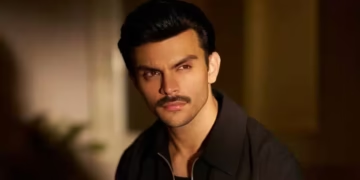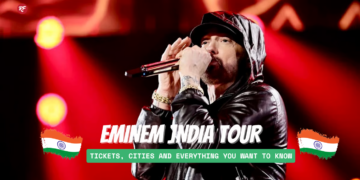An action-packed high-voltage movie with a powerful political center, Kaala unleashes Rajinikanth in the garb of real character, rather than the unstoppable comic-strip superman he has played on the big screen in the past few decades. A much toned-down superstar takes something away in the movie’s capability to supply the big excitement but puts in its disposal a radical, applicable assortment of problems that burst from the boundaries of the genre and also carry on a life of their past the character of their overpowering lead performer.
Kaala Movie Story
The protagonist of Kaala, a Tirunelveli indigenous, is a family guy who belongs to Dharavi. He looks up to them because mostly Tamil migrant dwellers of this Mumbai slum struggle to save their property and houses from a slum redevelopment plot. They protect their lands from thought up with a son-of-the-soil politician, a former gangster who currently has a real-estate firm of his own as well as the levers of power within his hands.
Kaala contributes to people’s immunity against a range of foes – the government, law enforcement, along with the realty company charged with razing Dharavi to the floor and rebuilding from scratch. Each of the arms of the government is at the beck and call of Haridev Abhyankar (Nana Patekar), that thinks that it’s his birthright to catch some patch of land that catches his fancy.
Concerning brute force, writer-director Pa Ranjith might not be providing anything extraordinarily unprecedented, but his company emphasis on the biases of caste, religion, and sex that India’s urban poor need to compete with on a daily basis. This turns Kaala to a hard-hitting spin on poverty, and abuse of power and manipulation.
Kaala Movie: Tinge of Kabali

Ranjith, who directed Rajinikanth in his prior release Kabali, where the megastar stood up to its rights of Tamil workers in Malaysia, queries the histories and mythologies perpetuated by the wealthy and influential, visiting the degree of flipping around the Ram-Ravan binary at a ferocious life-and-death tussle between outsiders’ and the densely entitled elite in India’s financial capital. He banks upon a megastar whose leanings appear to signify neo-liberal status quo to propel this interesting job, makes the movie even more intriguing.
At a brief sequence at the lead-up into the climax, a Mumbai police constable that had been increased in Dharavi switches. His senior, Pankaj Patil (Pankaj Tripathi), warns him that he’s courting trouble by moving against the authorities. I’m with all the people, he answers. This cop’s title is Shivajirao Gaekwad (celebrity Rajinikanth’s name). Can there be a message lurking in there?
If Kaala is supposed to be a post-apocalyptic curtain-raiser on Rajinikanth’s foray into politics, then it’s both baffling and perplexing. Since the sounds the protagonist makes in this movie as an uncompromising champion of the rights of the poor is in variance with the views the real-life Rajini expressed after the new Thoothukudi police shooting on anti-Sterlite protesters that took a toll of 13 lives.
Kaala Movie: Confusion of real and reel life
Tide over that dilemma between reel-life and actual life and you may get the movie both enjoyable and thought-provoking. Kaala is attired in black, Hari Dada in pristine white. Yes, the ethical canvas this is black and white, but Ranjith cries in some different colors, especially red and blue, to signify various colors of rebellion. Black, as Kaala maintains in a dialogue with Hari Dada, is the color of mehnat (hard work). As the movie evolves, it suggests defiance and solves, also.
Since he sits brooding after a particularly embarrassing confrontation with his nemesis, Hari Dada is requested by his granddaughter that the evil Kaala is. He’s Ravana, he answers. She asks: So, Ram will kill him, will not he? Valmiki has composed it. Therefore, he must kill Ravana, he claims airily.

Kaala from Ranjith’s view
However, Kaala, in Ranjith’s defiant build, has many heads. Even when I die, the struggle will last because each Dharavi resident is a Kaala, he admits as he storms out to shoot about the land grabbers from the finale. He loses much from the battle, such as two of his closest ones, but has the unqualified support of his followers that tackle him just as Kaala, sans any honorifics. He’s among these.
However, Kaala allows the humanized Rajinikanth his signature minutes: slo-mo swag, thundering punchlines, along with two or three stylized, beautifully filmed and edited action sequences. In a single, staged a Mumbai flyover amid torrential rain, then he becomes a one-man military and utilizes his umbrella for a shield, saber and spear rolled into one. His goal, among Hari Dada’s most barbarous men, Vishnu (Sampath Raj), stands no chance of getting off.
However, Kaala is not a mere single-note rabble-rouser. To his sons and their wives and kids, he’s a loving patriarch, equally stern and affectionate. To his spouse Selvi (a superbly energetic Easwari Rao), he’s a doting husband constantly mindful not to displease her. To single mommy Zarina (an impressively steady Huma Qureshi), his ex-flame who’s returned from Africa after changing many squatter places there, he’s a chance that situation deprived her, but she gets the most of her next innings together with him, now for a crusader for a just cause. To Toofani (consummate scene-stealer Anjali Patil), a feisty, garrulous Marathi mulgi who’s in love with Kaala’s youngest son Lenin (Manikandan), he’s a role model. Moreover, to the folks of Dharavi, Kaala is an undisputed messiah.
The dilemma of Kaala
The real crux of Kaala is however the contested slum itself. After an eyesore which Mumbai taxpayers didn’t design to provide another look too, Dharavi is currently a flourishing, if nevertheless squalid, sprawl in the core of the megalopolis and about the radar of both promoters and contractors. At the start, Ranjith’s script alludes to wars down the centuries, all who were scrapped to the greed of property, and likens them to the atrocities being committed on the weak and dispossessed in the name of evolution.
Our land is our life, Kaala claims to Hari Dada. The latter’s answer sums up the association between the haves and have-nots: Electricity is my entire life. Hari Dada’s ‘pure Mumbai’ and ‘electronic Dharavi’ schemes slap of a desire to work out his could upon individuals he sees as undesirable and dispensable. However, Dharavi works on another principle: it disturbs people of all religions, castes, and areas, those who’ve contributed their sweat and blood to maintaining the area tick.
Admirable characters
Particular mention should be about Easwari Rao (like Kaala’s spouse, Selvi) and Anjali Patil (as Puyal, the girlfriend of one of Kaala’s sons). You may fall in love with their characters. The theme tune, which, by today, is enormously popular is where Ranjith finds his genius as a director and writer, carefully feeding the desire of Rajinikanth lovers. This could be recalled as one of the greatest climaxes in a Rajinikanth film. Ranjith owes to his exceptional technical team (cinematographer Murali, music manager Santhosh Narayanan, editor Sreekar Prasad and art manager Ramalingam) for assisting him to visualize and send this 51 percent Rajini-49percent Ranjith.
The tunes have created a stir among generations. It’s slow yet has numerous peppy tracks. Hence, the audio of Kaala is something to look around.
Hardcore Rajini fans may find Kaala a bit on the dull side. However, the nearly three-hour movie can grow on the ones who possess the patience to attempt to get their minds around its most audacious departures out of standard. Kaala is out and also a director’s movie. Rajinikanth is a bonus. Consequently, if you’re somebody who worships, Rajnikant, Kaala is had to watch for you, since Rajni Sir is back to the display after such a very long time.






















